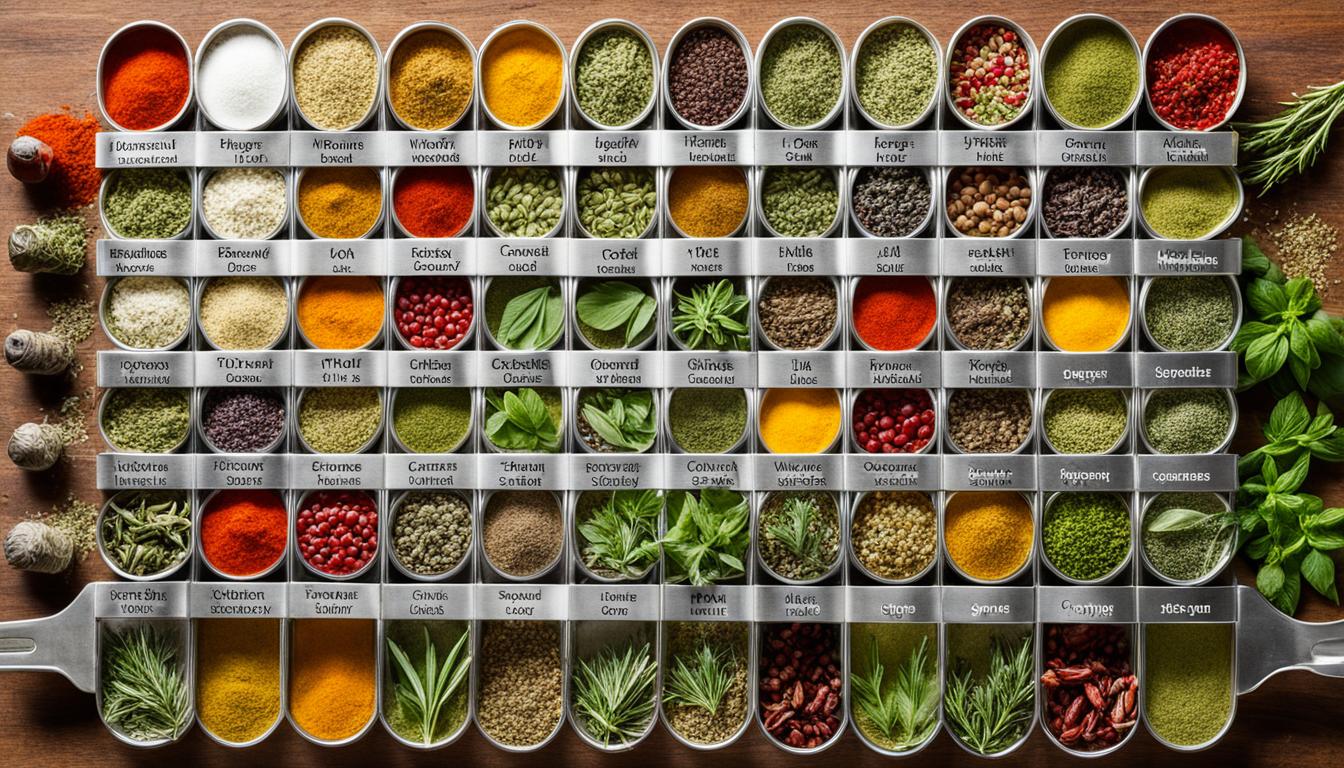Did you know that a single gram of dried herbs can pack the same flavor punch as a whopping 3-4 grams of their fresh counterparts? This staggering statistic highlights the importance of understanding the conversion ratios between dried and fresh herbs, spices, vegetables, and fruits. Whether you’re an avid home cook or a professional chef, mastering these ratios can make all the difference in your culinary creations.
Unsure about conversions for dried vs. fresh herbs? We explain the ratios for converting between dried and fresh herbs, spices, veggies, and fruits. The general rule for dried “flaky” herbs like dried cilantro or dried tarragon is 3 to 1 or three parts fresh to one part dried. You can also look at this as 1 tablespoon fresh herbs = 1 teaspoon dried herbs. For dried ground herbs like ground ginger, the general ratio is 4 to 1 or four parts fresh to one part dried. Another general rule is 1 teaspoon dried leaf herb = 1/2 teaspoon ground dried herb.
Fresh herbs like basil and parsley are 80% to 90% water, and in the drying process, the water evaporates, leaving highly potent essential oils with more concentrated flavors than their fresh counterparts. However, there are always exceptions to the rules, and we provide a comprehensive chart with the most common conversion ratios.
Understanding Fresh vs. Dried Herbs
When it comes to the world of herbs, fresh and dried options offer distinct advantages. In general, dried herbs have more concentrated flavors than their fresh counterparts. This is because the drying process removes the water content, leaving behind the essential oils that are responsible for the herbs’ aromatic and flavorful properties. Dried herbs are also a more economical choice, as you can use less of them and they don’t truly expire.
Flavor Intensity
Examples of herbs that are better suited for the dried treatment include oregano, thyme, marjoram, rosemary, fennel seed, curry leaf, and bay leaf. These herbs tend to have a more robust and pronounced flavor when dried. On the other hand, soft, tender, and leafy herbs offer more vibrant flavor when used fresh. Basil, parsley, chives, tarragon, and cilantro are prime examples of herbs that shine brightest in their fresh form.
Shelf Life and Storage
Fresh herbs have a relatively short shelf life, typically lasting only a few days in the refrigerator. Proper storage is crucial – fresh herbs should be stored in the refrigerator in a glass or jar filled with water. Dried herbs, on the other hand, have a much longer shelf life and can be kept in airtight containers in a cool, dark place for several months.
Best Uses for Fresh and Dried Herbs
Fresh herbs are best used to finish a dish, added towards the end of the cooking process and crushed with fingers to release their oils and increase flavor. Dried herbs work best when added at the beginning of cooking or at least 20 minutes before the end, and they pair well with oil, butter, fat, or water to infuse the liquid with their concentrated flavor.
is there a ratio for converting between dried
When it comes to converting between fresh and dried herbs, spices, vegetables, and fruits, understanding the appropriate ratios is key. The general rule for converting dried “flaky” herbs like dried cilantro or dried tarragon is a 3-to-1 ratio of fresh to dry – 1 tablespoon of fresh herb equates to 1 teaspoon of dried herb. This ratio can also be expressed as 1 tablespoon fresh herbs = 1 teaspoon dried herbs.
General Conversion Ratios
For converting fresh herbs to ground dried herbs, the ratio is typically 4-to-1 – 1 tablespoon of fresh herb = 3/4 teaspoon of ground dried herb. Additionally, there is a 6-to-1 ratio of dried leaf herb to ground dried herb – 1 tablespoon of dried leaf herb = 1/2 teaspoon of ground dried herb.
Exceptions to the Conversion Rules
While these general conversion ratios provide a helpful guideline, it’s important to note that there may be exceptions, particularly for specific herbs, spices, vegetables, and fruits. Some ingredients may have slightly different conversion factors, so it’s always a good idea to consult a reliable reference or do a small test batch when substituting fresh for dried (or vice versa) to ensure the best results in your recipes.
